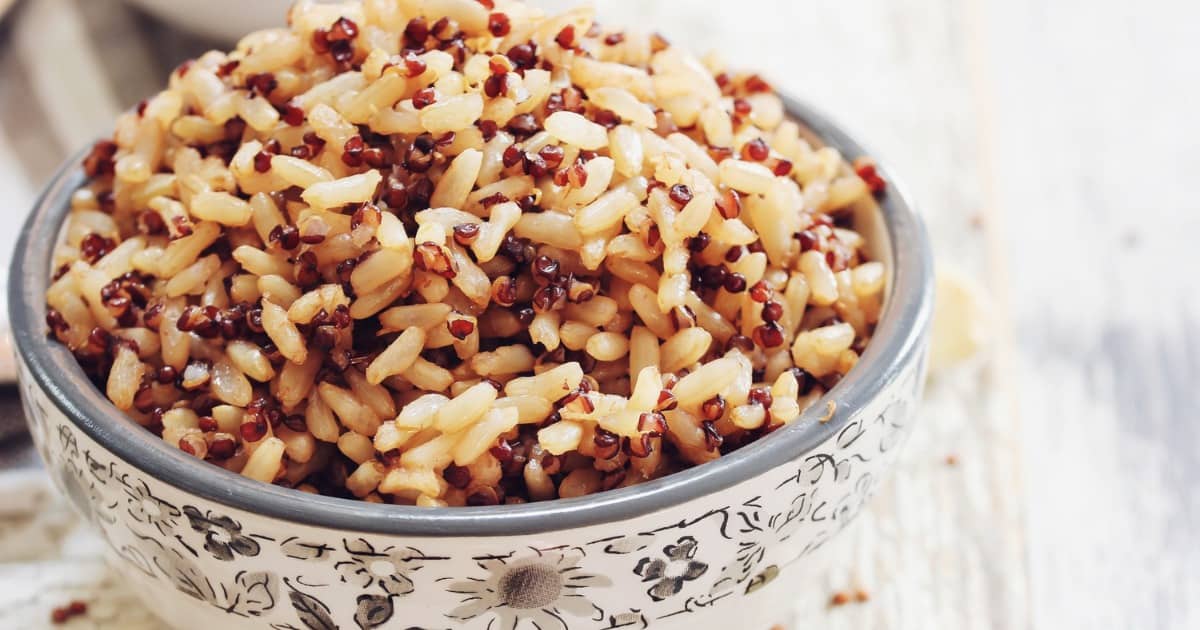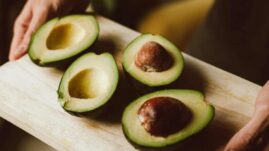If you live with diabetes, you know that eating healthy food is crucial for good blood sugar levels. Many people with diabetes follow a low-carb diet for better management.
However, if you enjoy brown rice you may want to know: Is rice, specifically brown rice, good for diabetes management?
This article will tell you everything you need to know about eating brown rice if you have diabetes.

Table of Contents
- What are the health benefits of brown rice?
- What do you have to be wary of when eating brown rice?
- Should people with diabetes eat brown rice?
- How to incorporate brown rice into your diet
- Do you have to take insulin for brown rice?
- Can eating brown rice help me lose weight?
- What is the healthiest type of rice?
What are the health benefits of brown rice?
Brown rice has plenty of health benefits, and eating it regularly can be a great addition to your diet.
A good source of whole grains
Unlike white rice that’s been stripped of its beneficial outer layers, brown rice is an intact whole grain, which has excellent health benefits.
Studies show that eating just two servings of whole grains per day can lower their risk of developing type 2 diabetes by nearly 30%!
Additionally, whole grains can help to lower bad cholesterol (LDL), increase good cholesterol (HDL), and lower triglycerides.
These are all key to heart health, which is especially important for people living with diabetes.
A good source of fiber
Each serving of brown rice offers around 3.5 grams of fiber, whereas white rice only has 1 gram per serving.
Most adults should aim for between 25-30 grams of fiber per day from food.
Fiber will keep you fuller for longer, and help prevent overeating.
It also offers protective benefits against lower gastrointestinal (GI) distress, disease, and even cancer!
Contains vitamins and minerals
The bran and the germ are the two outermost layers of rice.
These layers are removed in the production of white rice, however, they also contain nearly all of the vitamins and minerals in rice.
These include:
- Calcium
- Iron
- Magnesium
- Phosphorous
- Selenium
- Niacin
- Folate
- Vitamin B1
- Vitamin B6
Brown rice also contains flavonoids and phenols. These two antioxidants help protect against aging—and are not found in white rice.
A lower glycemic index (GI)
The glycemic index is a measure of how fast a food will spike blood sugar, which is very important to know for people who have diabetes.
Brown rice has a GI of 55, which is exceedingly low for a grain. White rice, by comparison, has a higher GI of 64.
The glycemic index is ranked into three categories:
- Low: 0-55
- Moderate: 56-69
- High: 70+
This makes brown rice a smart choice, especially if you’re eating it in place of white rice.
Its low GI means that it will raise blood sugars more slowly.
What do you have to be wary of when eating brown rice?
Like all grains, brown rice is not without carbohydrates.
If you live with diabetes, it’s crucial to count and be aware of the total amount of carbohydrates you eat.
If you take insulin, you will need to know your insulin-to-carbohydrate ratio and most likely take insulin accordingly.
Additionally, one cup of brown rice has over 200 calories, so it is not considered a low-calorie food. This may inhibit weight loss goals if you’re on a calorie-restriction diet or meal plan.
Check with your doctor if you’re concerned or have questions about counting the carbohydrates in brown rice.
Should people with diabetes eat brown rice?
If you live with diabetes and you’re wondering if you can eat brown rice, the answer is yes!
You do not need to be afraid of eating brown rice or thinking that it will sabotage your diabetes management.
Brown rice has plenty of healthy fiber, vitamins, antioxidants, and minerals, and is a healthy whole grain.
It has a low GI and is good for heart health. Plus, it may even help prevent type 2 diabetes.
However, brown rice is not a low-calorie food nor is it low in carbohydrates.
Moderation is key. Enjoy this staple food by pairing a small portion of brown rice with a healthy protein and plenty of vegetables.
How to incorporate brown rice into your diet
If you wish to incorporate brown rice into your diet, the following strategies can help:
- Eat brown rice in moderation, and stick to smaller portion sizes.
- Always measure your rice and count carbohydrates before eating it. A serving size is of cooked rice.
- If you take insulin for rice, make sure you know your insulin-to-carbohydrate ratio and take the appropriate amount of insulin to cover the carbohydrates in it.
- Pair rice with healthy protein and fat sources and plenty of vegetables for a balanced meal.
- Be wary of sauces or toppings on rice that can add extra sugar and carbohydrates to your food.
Do you have to take insulin for brown rice?
This will all depend on your insulin-to-carbohydrate ratio, correction factor, and insulin sensitivity ratios.
On its own, brown rice does have a significant amount of carbohydrates. Most people who take insulin will need to do so for this food.
Additionally, if you’re eating brown rice with any sugary sauces or other foods containing carbohydrates, you will need to count carbohydrates and dose insulin accordingly.
Talk with your doctor if you’re concerned about how to bolus insulin for brown rice.
Can eating brown rice help me lose weight?
Brown rice can be a great alternative to white rice for those trying to lose weight, especially because it is full of filling fiber, which helps people eat less and feel fuller for longer.
Brown rice is also full of vitamins and minerals, making it a naturally healthier choice than many refined grains and other carbohydrates.
Always talk with your doctor if you have diabetes and are looking to lose weight.
They can offer suggestions individualized to you and your health goals.
They may also refer you to a registered dietitian (RD) who can formulate an appropriate meal plan to aid in your weight loss goals.
What is the healthiest type of rice?
While this is often disputed, any whole grain rice is going to be healthier than white or sticky rice.
White and sticky rice both lack fiber and vital nutrients, have a higher GI, and spike blood sugars.
Rice varieties such as black rice, wild rice, red rice, and brown rice are excellent sources of antioxidants, vitamins, minerals, and healthy fiber. These are top choices if you’re looking to improve your health.
Cauliflower rice is a great option for people who are looking to avoid the carbohydrates in rice completely.
It has vitamins, minerals, and fiber without the extra carbohydrates.
However, cauliflower rice is not officially a rice or whole grain, but rather a grated vegetable rice replacement.



